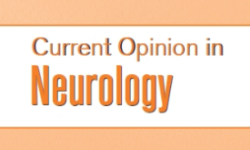“Objectives: Headache disorders are a common cause of disability and reduced health-related quality of life globally. Growing evidence supports the use of cannabis-based medicinal products (CBMPs) for chronic pain; however, a paucity of research specifically focuses on CBMPs’ efficacy and safety in headache disorders. This study aims to assess changes in validated patient-reported outcome measures (PROMs) in patients with headaches prescribed CBMPs and investigate the clinical safety in this population.
Methods: A case series of the UK Medical Cannabis Registry was conducted. Primary outcomes were changes from baseline in PROMs (Headache Impact Test-6 (HIT-6), Migraine Disability Assessment (MIDAS), EQ-5D-5L, Generalized Anxiety Disorder-7 (GAD-7) questionnaire and Single-Item Sleep Quality Scale (SQS)) at 1-, 3-, and 6-months follow-up. P-values <0.050 were deemed statistically significant.
Results: Ninety-seven patients were identified for inclusion. Improvements in HIT-6, MIDAS, EQ-5D-5L and SQS were observed at 1-, 3-, and 6-months (p < 0.005) follow-up. GAD-7 improved at 1- and 3-months (p < 0.050). Seventeen (17.5%) patients experienced a total of 113 (116.5%) adverse events.
Conclusion: Improvements in headache/migraine-specific PROMs and general health-related quality of life were associated with the initiation of CBMPs in patients with headache disorders. Cautious interpretation of results is necessary, and randomized control trials are required to ascertain causality.”
https://pubmed.ncbi.nlm.nih.gov/36722292/
https://www.tandfonline.com/doi/full/10.1080/14737175.2023.2174017


 “The Endocannabinoid System (ECS) is primarily responsible for maintaining homeostasis, a balance in internal environment (temperature, mood, and immune system) and energy input and output in living, biological systems.
“The Endocannabinoid System (ECS) is primarily responsible for maintaining homeostasis, a balance in internal environment (temperature, mood, and immune system) and energy input and output in living, biological systems.  “Few studies to date have measured the real-time effects of consumption of common and commercially available Cannabis products for the treatment of headache and migraine under naturalistic conditions. This study examines, for the first time, the effectiveness of using dried Cannabis flower, the most widely used type of Cannabis product in the United States, in actual time for treatment of headache- and migraine-related pain and the associations between different product characteristics and changes in symptom intensity following Cannabis use.
“Few studies to date have measured the real-time effects of consumption of common and commercially available Cannabis products for the treatment of headache and migraine under naturalistic conditions. This study examines, for the first time, the effectiveness of using dried Cannabis flower, the most widely used type of Cannabis product in the United States, in actual time for treatment of headache- and migraine-related pain and the associations between different product characteristics and changes in symptom intensity following Cannabis use. “Genus Cannabis belong to family Cannabaceae and is traditionally used as medicinal plant against many diseases notably asthma, malaria, treatment of skin diseases, diabetes and headache. The plant Cannabis sativa L. is flowering and an annual herbaceous plant located to eastern Asia but now of cosmopolitan distribution due to extensive cultivation.
“Genus Cannabis belong to family Cannabaceae and is traditionally used as medicinal plant against many diseases notably asthma, malaria, treatment of skin diseases, diabetes and headache. The plant Cannabis sativa L. is flowering and an annual herbaceous plant located to eastern Asia but now of cosmopolitan distribution due to extensive cultivation. “Medical cannabis (MC) treatment for migraine is practically emerging, although sufficient clinical data are not available for this indication. This cross-sectional questionnaire-based study aimed to investigate the associations between phytocannabinoid treatment and migraine frequency.
“Medical cannabis (MC) treatment for migraine is practically emerging, although sufficient clinical data are not available for this indication. This cross-sectional questionnaire-based study aimed to investigate the associations between phytocannabinoid treatment and migraine frequency. “Use of
“Use of 
 “Migraine is a common, highly disabling disorder. Its treatment involves acute and preventive therapy. Many of available preventive medications are not well tolerated, which results in poor compliance and limited effectiveness.
“Migraine is a common, highly disabling disorder. Its treatment involves acute and preventive therapy. Many of available preventive medications are not well tolerated, which results in poor compliance and limited effectiveness.